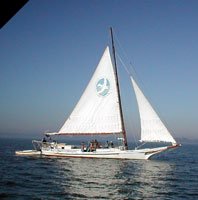Since I presented Body-Flow: Freedom From Fear-Reactivity as a book on my exercise philosophy, I did not intend it to be an academic dissertation on exercise science. Some people have expressed that they would like to know more of the science underpinning Body-Flow. Therefore, I thought I'd share one of the recent insights brought to light through a Q&A with a client.
Lately, there has been an increased interest in the Body-Flow's Core Activation methodology, in particular the relationship of the "Inner to Outer Units."
Nikolay Boguk and Lance Twomey published the Clinical Anatomy of the Lumbar Spine in 1987. They were the first to introduce clinical observations of the abdominal and back muscles coordinating as a "functional unit."
In 1999, Australian scientists C. Richardson, G. Jull, P. Hodges and J. Hides published Therapeutic Exercise for Spinal Stabilization in Lower Back Pain. Within they first coined the term "Inner Unit" describing how the deep abdominal wall works synergistically with the "Outer Unit" (the conventional targets of fitness: rectus abdominis, obliquus externus abdominis and psoas.)
What Is The Inner Unit?
Paul Chek describes the Inner Unit as, "describing the functional synergy between the transversus abdominis and posterior fibers of the obliquus internus abdominis, pelvic floor muscles, multifidus and lumbar portions of the longisssimus and iliocostalis, as well as the diaphragm." ("The Inner Unit: A New Frontier In Abdominal Training"; IAAF Technical Quarterly: New Studies in Athletics, 4/99)
The Inner Unit can be thought of as the musculature stabilizing and protecting your internal architecture, but also it is the bridge to controlling breathing and as a result your autonomic nervous system. The correct firing of the Inner Unit and its effective recruitment impacts not only your spinal stabilization so your prime movers can get in there and get the job done, but they impact your ability to BREATH and MOVE.
What Are The Dangers From Conventional
As a result of the conventional fixation on the crunch/sit-up style abdominal exercise, a culture of postural distortion is readily observable. Just look at any gym; look at most actors, models; and yes, look at most personal trainers, martial artists, physical therapists and celebrity coaches. What do you see? You see this strange Cro-Magnon carriage of forward-transposed neck, sunken chest (and of course compensatory over-developed pecs), distended over-developed abdominal wall, posteriorly-tilted pelvis (accompanied with a "fanny pack" of lower back tension).
These ADAPTED distortions can be traced empirically back to an obsessive exposure to crunches, sit-ups, leg extensions and lowering exercises so fanatically espoused by the "industry." I emphasize adaptation to allude to the Laws of Conditioning from my book Clubbell Training for Circular Strength:
- The Law of Outcome: whatever you do produces an outcome, regardless of how you value that outcome.
- The Law of Adaptation: whatever you do over a period of time creates a change in you to find homeostasis, regardless of how you value that adaptation.
- The Law of Progress: whatever you do with continually increasing volume, intensity, density or complexity, becomes more easily repeatable, regardless of how you value the progress.
As Dr. Eric Cobb, D.C. pointed out in a recent workshop on Z-Health Performance Solutions, the operative word in the above is REGARDLESS! Regardless of whether you desire the outcome, adaptation or progress, the body will make repeatable whatever you train it to do.

These laws are easily observable, and quantifiable, so it should come as no surprise that fixating upon certain muscle group(s) creates an outcome, if repeated to which you adapt to maintain. However, as you continue to increase the work that adaptation continues to progress. This can be an advantage for those that train holistically, moderately and sensibly. This however can also be a chronic danger for those that train a particular muscle group to the exclusion of the organism.
I write "organism" here because there's something more at stake here than your musculature. Your muscles are the motors of your body's chassis, but they are also the anti-gravitational stabilizers. In other words, your muscles keep you from being squashed under the weight of the Earth's gravity. They have a delicate balance - a beautiful harmony allowing you to negotiate your little Spaceship Earth with relative ease.
Until you interrupt, compete with and alter that balance. When you exercise in an imbalanced manner emphasizing certain muscle groups over others, it alters this 'delicate balance.' Muscle tension (the product of exercise OR stress) causes changes in your alignment. In this case, the over-emphasis of Outer Unit abdominal work pulls the chest downward, the neck forward, pulls the hip flexors tight creating this collapsed posture so prominent in today's "fitness industry."
These imbalances create inherent postural weaknesses - especially in the lower back and the shoulders (any surprise that these are some of the most common complaints from PT clients?)
But even farther along than this are the chronic implications of postural distortions as outlined in the Wheel of Dis-Ease in Body- Flow. Postural distortions progress into cumulative deep tissue and organ trauma, nervous interference and pain, biochemical and bioenergetic imbalances, illness fatigue and disease.
So What Happens If You Train An Incorrect Firing Sequence And You Neglect To Produce Effective Inner- Outer Unit Synergy?
Check points out in "The Inner Unit: A New Frontier In Abdominal Training" that research has shown that the Inner Unit exists under a different neurological control than the Outer Unit.
Conventional training focuses upon the Outer Unit to the exclusion of the Inner Unit. This fixation on the 6-pack creates an improper firing sequence for the core which promotes ineffective breathing patterns, poor posture, postural distortions and joint instability.
When the Inner Unit is miswired through poor practices, exerting any type of effort can predispose the spine to force which it cannot stabilize and/or absorb. This often results in SI joint and spinal injury. When the firing patterns is wired 'naturally' (as it should be), then injury is seldom even under intense stress.
What Is The Current Scope Of Inner Unit Training?
The current emphasis of "core" training of this genre involves postural stabilization in isolated positions through very simplistic and highly specific (to the activity or injury) therapeutic exercise.
However, this doesn't address the how ineffective Inner Unit recruitment and firing sequence impacts the performance of athletic and vocational tasks.
How does Maximology improve upon this?
The exercises in Maximology are useful for training the inner unit because they teach:
- Correct breathing patterns for optimal recruitment of the core during dynamic movement.
- The rotational/compressional drills encourage inner unit recruitment while relieving unnecessary tension in the outer unit structures. (Henkin)
I wouldn't say that the drills I present are "more effective" but rather Maximology's Core Activation drills address movement outside of the contexts of traditional therapeutic exercise for postural alignment to alleviate lower back pain.
Core Activation basically refers to relaxed natural breathing under adverse and complex conditions, such as the "sophisticated" exercises depicted in Maximology.
The goal is to incrementally sophisticate the exercise to prevent and/or release unnecessary Outer unit muscle tension while maintaining effective Inner unit tension to safely stabilize the structure through the movement's negotiation. Furthermore, the goal is the correct timing of inner to outer unit activation.
Paul Chek's offered a metaphor of a Pirate Ship to describe the inner-outer unit synergy ("The Inner Unit: A New Frontier In Abdominal Training," IAAF Technical Quarterly: New Studies in Athletics, 4/99). 
Basically, he compares the inner unit to the cables directly holding the mast upright and the outer unit to the cables mounted to the ends of the ship. Without correct inner unit stabilization, the mast will buckle under the strain of wild winds filling the sails.
There are two issues where I prefer to expand upon his excellent metaphor. The first is addressing the wind to the sails - breathing. Most people condition(ed) themselves conscious breathing techniques which do not sync up with structural stabilization and movement efficiency. They actually defeat traditional core stabilization by breathing in a way that doesn't sync with the architecture of their structure and movement.
In Maximology, I suggest that breathing should derive from structural compression/expansion and inner unit activation; basically, exhalation on compression and activation - inhalation on expansion and deactivation. When done correctly, the total performance output is GREATER than any of the sum of its parts due to the synergistic effect of natural integration of breathing, movement and structure.
Chek gives an exercise example of the musculo-skeletal dynamics of inner-outer unit synergy, "Almost in synchrony with the thought, "Pick up the weights from the floor," the brain activates the inner unit, contracting the multifidus and drawing in the transversus abdominis. This tightens the thoraco-lumbar fascia in a weight belt-like fashion. Just as this is happening, there is simultaneous activation of the diaphragm above and the pelvic floor below. The effect is to encapsulate the internal organs as they are compressed by the transversus abdominis. This process creates both stiffness of the trunk and stabilizes the joints of the pelvis, spine and rib cage, allowing effective force transfer from the leg musculature, trunk and large prime movers of the back and arms to the dumbbells." ("The Inner Unit: A New Frontier In Abdominal Training," IAAF Technical Quarterly: New Studies in Athletics, 4/99)
What isn't mentioned and what I haven't found anywhere is the uniqueness of sequencing Efficiently Effective (Z-Health Performance Solutions Intensive, Dr. Eric Cobb, D.C. 8/03) breathing patterns in 'sophisticated' (progressing from simple components to refined movements) exercises. These breathing patterns would naturally occur if not inhibited by overuse of ineffective, conscious breathing instruction, performance anxiety, trauma and tension.
Efficiently Effective Inner Unit recruitment and firing sequence produces powerful breathing patterns if fear-reactivity is counter- conditioned to allow natural breathing to occur.
Furthermore, I promote the concept of spinal movement "like a string of pearls." This is not in conflict with traditional therapeutic exercise for postural alignment. On the contrary, it involves movement outside of the context of maintaining an "upright posture." Life is so dynamic and our movement capability reflects this.
In Chek's metaphor, the shipmates busy themselves with appropriate tension on the cables and ropes to secure the mast: both the small segmental stabilizers and the large movers. Without a correct timing of the inner and outer muscular units or by overuse/hyper-tension of one direction of cables, the mast's alignment is disrupted (and as a result, sailing is impossible.)
However, the metaphor falls short in addressing that the mast itself moves, bends, twists and ultimately "like a string of pearls." Being able to expand and collapse the sails when moving, bending and twisting while effectively stabilizing the mast (in its current, changing configuration) is the goal of the Core Activation drills in Maximology.
